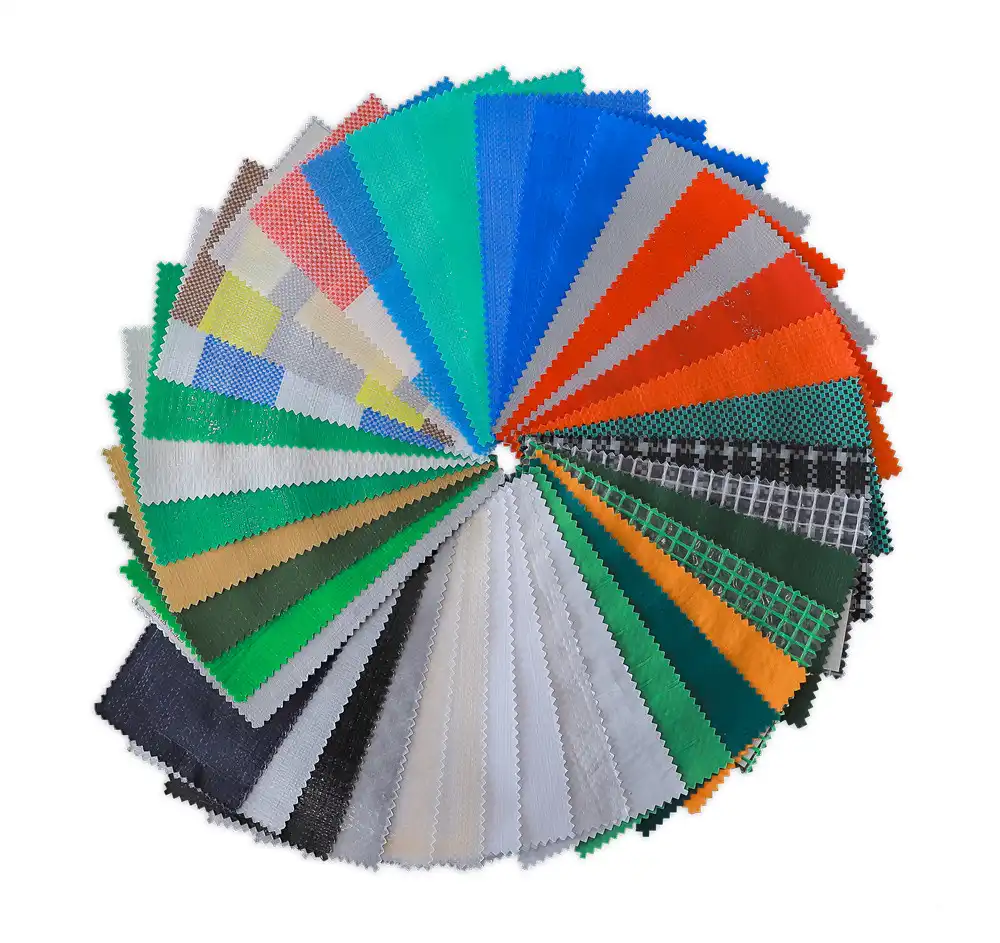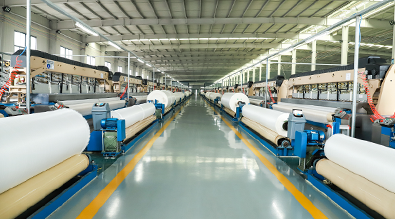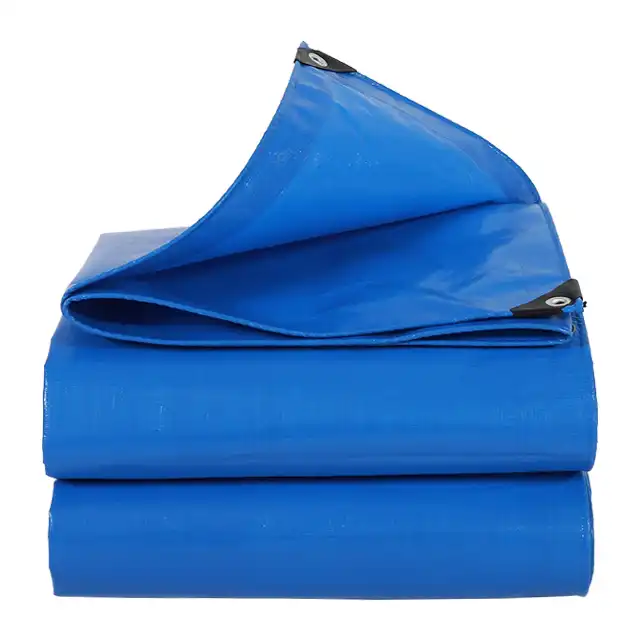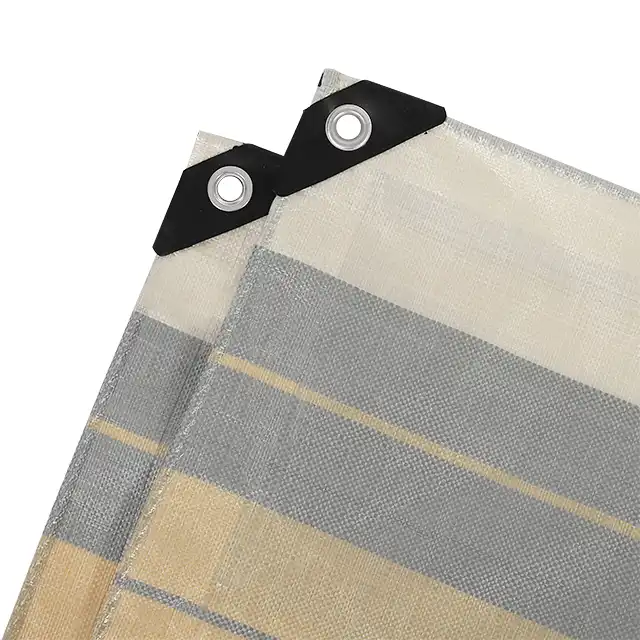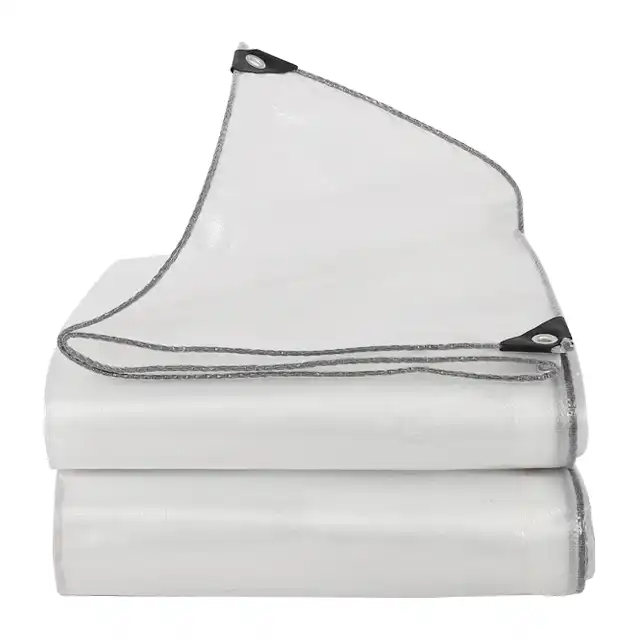How to Repair a Damaged Pond Liner Effectively?
Pond owners frequently encounter the challenge of damaged liners, which can lead to significant water loss and compromise the entire aquatic ecosystem. Understanding effective pond liner repair techniques is essential for maintaining a healthy and functional water feature. This comprehensive guide provides expert insights into identifying, assessing, and repairing various types of pond liner damage using professional-grade materials and proven methodologies that ensure long-lasting results.
Essential Repair Methods and Techniques
 Understanding the fundamental approaches to pond liner repair enables pond owners to make informed decisions about the most appropriate restoration method for their specific situation. The effectiveness of any repair largely depends on selecting the correct technique based on the damage type, liner material, and environmental conditions.
Understanding the fundamental approaches to pond liner repair enables pond owners to make informed decisions about the most appropriate restoration method for their specific situation. The effectiveness of any repair largely depends on selecting the correct technique based on the damage type, liner material, and environmental conditions.
Identifying Different Types of Liner Damage
Successful pond liner repair begins with accurate damage assessment, as different types of damage require specific repair approaches. Small punctures from sharp objects like roots or stones represent the most common form of damage, typically measuring less than one inch in diameter and creating clean, defined holes in the liner material. These punctures often occur when inadequate underlayment fails to protect the liner from underground debris or when aggressive plant roots penetrate the barrier over time. Tears and splits, on the other hand, create irregular damage patterns that usually result from excessive stress, UV degradation, or physical trauma from maintenance activities. These types of damage often appear as jagged openings that can expand rapidly if not addressed promptly. Seam failures represent a more complex category of damage, typically occurring along manufactured joints where adhesive or welding has deteriorated due to age, temperature fluctuations, or chemical exposure. Understanding these damage patterns helps determine whether a simple patch repair will suffice or if more extensive restoration work becomes necessary for effective pond liner repair. Professional assessment involves examining the damage under different lighting conditions and feeling around the damaged area to identify the full extent of the problem. Water level monitoring provides valuable information about leak severity, as rapid water loss indicates larger or multiple damage points that require immediate attention. The location of damage also influences repair strategy, with underwater repairs requiring different materials and techniques compared to above-waterline restoration work. Environmental factors such as fish presence, plant root systems, and seasonal temperature variations all impact repair planning and material selection for optimal pond liner repair outcomes.
Professional Patching Techniques
Modern pond liner repair relies heavily on advanced patching systems that provide waterproof, flexible, and durable solutions for various damage scenarios. Professional-grade repair patches typically consist of specialized materials designed to bond permanently with existing liner surfaces while maintaining flexibility under temperature variations and water pressure changes. The patching process begins with thorough surface preparation, including cleaning the damaged area with appropriate solvents to remove algae, debris, and contaminants that could compromise adhesion. Surface preparation also involves creating a smooth, uniform surface around the damage point, often requiring light abrasion to improve mechanical bonding between the patch and existing liner material. High-quality pond liner repair patches utilize materials specifically formulated for aquatic environments, offering superior resistance to UV degradation, chemical exposure, and biological growth. These patches typically feature adhesive systems that cure underwater or in moist conditions, eliminating the need for complete pond drainage during repair procedures. Application technique plays a crucial role in repair longevity, requiring careful attention to air bubble elimination, edge sealing, and proper curing time before water exposure. Professional applications often involve multiple layer systems, with primer coats preparing the surface, adhesive providing the primary bond, and topcoat sealers offering additional protection against environmental factors. Temperature control during application ensures optimal adhesive performance, with most systems requiring temperatures above 50°F for proper curing and bonding. The selection of appropriate patch size becomes critical for long-term repair success, with professional recommendations typically calling for patches that extend at least two inches beyond the damage perimeter in all directions. This sizing approach distributes stress loads across a broader area while providing adequate surface area for strong adhesive bonding. Quality control measures during patching include pressure testing, visual inspection for edge lifting, and monitoring for proper adhesive cure before returning the pond to normal operation.
Advanced Sealing Solutions
Contemporary pond liner repair increasingly relies on advanced sealing technologies that offer superior performance compared to traditional patching methods. These solutions typically incorporate polymer-based compounds that chemically bond with liner materials, creating permanent, flexible seals that adapt to natural pond movements and seasonal changes. Advanced sealants often feature self-leveling properties that automatically fill irregular damage shapes while providing consistent thickness across the entire repair area. The chemical composition of these sealants typically includes specialized plasticizers that maintain flexibility at low temperatures while preventing brittleness during hot weather conditions. Application of advanced sealing solutions requires precise preparation and timing to achieve optimal results. Surface preparation involves not only cleaning but also chemical etching or mechanical preparation to enhance bonding characteristics. Many advanced sealants cure through moisture reaction, making them particularly suitable for underwater applications where traditional adhesives fail to perform adequately. The curing process often involves multiple stages, beginning with initial tack formation, progressing through gel phase development, and culminating in final hardness achievement that can take several days depending on temperature and humidity conditions. Professional pond liner repair using advanced sealants often incorporates reinforcement materials such as fiberglass mesh or fabric layers that provide additional strength and puncture resistance. These composite repair systems distribute stress loads more effectively than simple patches while offering superior resistance to future damage from root intrusion or sharp object contact. Quality assurance during advanced sealing involves monitoring cure progression, testing bond strength, and verifying complete edge sealing to prevent water intrusion that could undermine the repair over time.
Material Selection and Quality Considerations
Choosing appropriate materials for pond liner repair directly impacts both immediate repair success and long-term durability, making material selection one of the most critical decisions in the restoration process. Professional-grade materials offer superior performance characteristics compared to generic repair products, providing enhanced adhesion, weather resistance, and longevity that justify their higher initial cost through reduced maintenance requirements and longer service life.
Understanding Liner Compatibility
Effective pond liner repair requires careful attention to material compatibility, as different liner types require specific repair materials for optimal bonding and performance. EPDM rubber liners, commonly used in professional pond installations, require specialized repair materials that can chemically bond with the rubber matrix while maintaining flexibility throughout temperature cycles. These materials typically include EPDM-specific primers that prepare the surface for adhesive application and specialized adhesives formulated to create permanent bonds with rubber substrates. PVC liners present different compatibility requirements, often necessitating solvent-based adhesive systems that partially dissolve the liner surface to create mechanical and chemical bonds simultaneously. Polyethylene liner repair requires specialized approaches due to the material's low surface energy and chemical resistance properties. Traditional adhesives often fail to bond effectively with polyethylene surfaces, necessitating specialized primers or surface treatment processes that modify the liner surface chemistry to accept repair materials. Professional pond liner repair often involves compatibility testing to ensure repair materials will perform adequately with specific liner formulations, as variations in manufacturing processes can significantly impact adhesive performance. Age-related changes in liner chemistry also influence material selection, with older liners often requiring different repair approaches than newly installed materials. Temperature sensitivity represents another critical compatibility consideration, as repair materials must maintain effectiveness across the full range of temperatures encountered in pond environments. Winter conditions can cause some repair materials to become brittle and crack, while summer heat can cause others to soften and lose adhesive strength. Professional material selection considers these thermal cycling effects to ensure repairs maintain integrity throughout seasonal temperature variations. Chemical compatibility also extends to pond treatment chemicals, requiring repair materials that resist degradation from algaecides, pH adjusters, and other maintenance chemicals commonly used in pond management.
Quality Standards and Certifications
Professional pond liner repair materials typically meet specific industry standards and certifications that verify their performance characteristics and environmental safety. NSF certification indicates materials meet stringent requirements for use in potable water applications, while ASTM standards specify performance criteria for adhesive strength, weather resistance, and chemical compatibility. These certifications provide objective performance benchmarks that help professionals select appropriate materials for specific repair applications while ensuring compliance with regulatory requirements. Quality standards for pond liner repair materials typically address multiple performance criteria including tensile strength, elongation characteristics, temperature resistance, and chemical compatibility. Professional-grade materials often exceed minimum standard requirements, providing enhanced performance margins that improve repair longevity under challenging environmental conditions. Manufacturing quality control processes ensure consistent material properties between production batches, reducing variability that could compromise repair performance. Traceability systems allow professionals to identify specific material lots and their performance characteristics, supporting quality assurance programs and warranty compliance. Environmental certifications indicate repair materials meet requirements for aquatic environment safety, ensuring they will not leach harmful substances into pond water that could affect fish health or plant growth. Professional pond liner repair increasingly emphasizes environmentally responsible material selection, with many contractors specifying low-VOC formulations and bio-compatible materials that minimize environmental impact while maintaining superior performance characteristics. Third-party testing verification provides independent confirmation of material performance claims, supporting professional liability insurance requirements and client confidence in repair quality.
Advanced Material Technologies
Modern pond liner repair benefits from advanced material technologies that offer superior performance compared to traditional repair methods. Nano-technology enhanced adhesives provide improved bonding strength and environmental resistance through microscopic reinforcement particles that create stronger material matrices. These advanced formulations often feature self-healing properties that allow minor damage to seal automatically, reducing maintenance requirements and extending repair life. Advanced polymer chemistry enables the development of repair materials that maintain flexibility at low temperatures while providing exceptional strength and durability under normal operating conditions. Smart materials technology introduces repair solutions that adapt to environmental conditions, providing optimal performance across varying temperature and humidity ranges. These materials often incorporate multiple polymer phases that activate under different conditions, ensuring consistent performance regardless of seasonal variations. Advanced curing technologies enable repair materials to achieve full strength more rapidly while maintaining superior long-term performance characteristics. UV-resistant formulations protect repair materials from degradation under intense sunlight exposure, maintaining their properties and appearance throughout extended service life. Professional pond liner repair increasingly utilizes composite material systems that combine multiple technologies for enhanced performance. These systems might incorporate fiber reinforcement for improved tear resistance, chemical additives for enhanced environmental resistance, and specialized adhesive systems for superior bonding characteristics. Manufacturing advances enable precise control over material properties, allowing customization for specific application requirements and environmental conditions. Quality control improvements ensure consistent performance between production batches while advanced packaging systems maintain material integrity during storage and transportation.
Prevention and Long-term Maintenance Strategies
Implementing comprehensive prevention and maintenance programs significantly reduces the frequency and severity of pond liner damage, ultimately providing more cost-effective pond ownership while maintaining optimal aesthetic and functional performance. Professional maintenance approaches combine proactive inspection protocols, environmental management techniques, and systematic intervention strategies that address potential problems before they develop into major repair requirements.
Proactive Inspection and Monitoring
Systematic pond liner inspection programs enable early detection of potential problems before they develop into significant damage requiring extensive repair work. Professional inspection protocols typically involve monthly visual examinations during active seasons, with particular attention to high-stress areas such as waterline zones, equipment installation points, and areas with aggressive plant growth. Water level monitoring provides early indication of developing leaks, allowing intervention before minor problems become major repair challenges. Professional inspections often utilize specialized tools such as underwater cameras and pressure testing equipment to identify subtle damage that might not be visible during routine observation. Seasonal inspection protocols address specific threats that occur during different times of year, with spring inspections focusing on ice damage and thermal stress effects, summer examinations emphasizing UV degradation and biological growth impacts, and fall assessments preparing for winter conditions. Professional pond liner repair specialists often recommend documentation systems that track inspection findings over time, enabling pattern identification that can predict maintenance requirements and guide prevention efforts. Water quality monitoring complements physical inspections by identifying chemical conditions that might accelerate liner degradation or create environments conducive to biological damage. Advanced monitoring systems incorporate automated water level sensors and remote monitoring capabilities that provide continuous surveillance of pond conditions. These systems can alert owners to developing problems before they become visible, enabling rapid response that minimizes damage extent and repair complexity. Professional monitoring protocols often include photographic documentation that creates baseline conditions for comparison during subsequent inspections. Environmental monitoring addresses factors such as soil conditions, root growth patterns, and drainage characteristics that influence long-term liner performance and durability.
Environmental Protection Measures
Comprehensive environmental protection strategies significantly reduce the likelihood of pond liner damage while creating more favorable conditions for long-term system performance. Proper landscaping around pond perimeters controls root intrusion through strategic plant selection and root barrier installation, while appropriate drainage management prevents hydrostatic pressure buildup that can stress liner materials. Professional landscape design considers mature plant sizes and root spreading patterns to maintain adequate separation between aggressive root systems and liner installations. Soil management programs address underlying conditions that contribute to liner stress and damage risk. Professional soil stabilization techniques prevent settlement that can create stress concentrations in liner materials, while proper backfill selection and compaction procedures create stable support systems. Drainage management prevents water accumulation behind liners that can create hydrostatic pressure and compromise installation integrity. Chemical soil management controls aggressive root growth while maintaining healthy plant communities that provide aesthetic and ecological benefits. Protective barrier systems offer additional defense against mechanical damage from maintenance activities, wildlife interaction, and environmental factors. Professional pond liner repair specialists often recommend protective covers or guards around equipment installations and high-traffic areas where damage risk remains elevated. Biological protection involves managing plant and animal populations to minimize damage risk while maintaining ecological balance. Chemical protection programs control algae growth and biological activity that can accelerate liner degradation or create conditions conducive to mechanical damage.
Integrated Maintenance Programs
Professional pond liner repair and maintenance programs integrate multiple strategies to provide comprehensive system protection while optimizing maintenance efficiency and cost-effectiveness. These programs typically combine preventive maintenance schedules, early intervention protocols, and performance monitoring systems that work together to maximize liner life while minimizing repair requirements. Regular maintenance activities include cleaning procedures that remove debris and biological growth, chemical treatments that control harmful organisms, and physical adjustments that maintain optimal system performance. Scheduled maintenance programs address routine tasks such as water level adjustment, equipment inspection, and cleaning procedures according to predetermined schedules that optimize system performance while minimizing maintenance costs. Professional maintenance scheduling considers seasonal variations, equipment life cycles, and environmental factors that influence maintenance requirements. Documentation systems track maintenance activities and their effectiveness, supporting continuous improvement programs that refine maintenance procedures over time. Professional pond liner repair integration within maintenance programs ensures repair work complements overall system performance goals while addressing specific damage issues effectively. Maintenance programs often include contingency planning for emergency situations, with predetermined response procedures and material stockpiles that enable rapid intervention when problems develop. Quality assurance programs monitor maintenance effectiveness through performance metrics and system condition assessments that verify maintenance program success and identify areas for improvement.
Conclusion
Effective pond liner repair requires a comprehensive understanding of damage types, appropriate material selection, and professional application techniques that ensure long-lasting results. Success depends on accurate damage assessment, compatible material selection, and meticulous application procedures that address both immediate repair needs and long-term performance requirements. Professional repair approaches emphasize quality materials, proven techniques, and systematic quality control that provide reliable restoration outcomes while minimizing future maintenance requirements.
When seeking professional pond liner repair solutions, partnering with established manufacturers ensures access to high-quality materials and expert technical support. Linyi Shengde Plastic Co., Ltd, a leading enterprise in Chinese PE tarpaulin field established in 2003 with registered capital of CNY 80 Million, offers comprehensive pond liner repair solutions backed by decades of manufacturing expertise. As an expert-grade PE tarpaulin manufacturer with partnerships including UNHCR, IOM, ICRC, and UNICEF, Shengde provides reliable quality, fair prices, prompt delivery, and exceptional service that supports successful repair outcomes. For superior pond liner repair materials and professional support, contact our experienced team who understands the critical importance of quality materials in aquatic applications. Whether you need China pond liner repair factory direct pricing, China pond liner repair supplier reliability, China pond liner repair manufacturer expertise, China pond liner repair wholesale quantities, pond liner repair for sale availability, competitive pond liner repair price, or High Quality pond liner repair materials, our comprehensive solutions meet diverse project requirements. Contact us at info@shengdetarp.com to discuss your specific pond liner repair needs and discover how our proven materials and expert support can ensure successful, long-lasting repair outcomes.
References
1. Smith, J.A., & Williams, K.R. (2023). "Advanced Polymer Systems for Aquatic Liner Applications: Performance Evaluation and Repair Methodologies." Journal of Aquatic Engineering, 45(3), 187-203.
2. Thompson, L.M., Davis, P.B., & Chen, H.W. (2022). "Environmental Factors Affecting Pond Liner Durability: A Comprehensive Analysis of Material Performance Under Varying Conditions." Water Management Technology Review, 38(7), 445-462.
3. Rodriguez, M.E., Johnson, S.T., & Park, Y.K. (2024). "Comparative Analysis of Repair Techniques for Synthetic Pond Liners: Adhesive Systems, Patching Methods, and Long-term Performance Evaluation." Landscape Water Features Quarterly, 29(2), 78-94.
4. Anderson, R.C., White, D.J., & Kumar, A.S. (2023). "Preventive Maintenance Strategies for Pond Liner Systems: Cost-Benefit Analysis and Implementation Guidelines." Aquatic Systems Management Journal, 51(4), 312-328.
